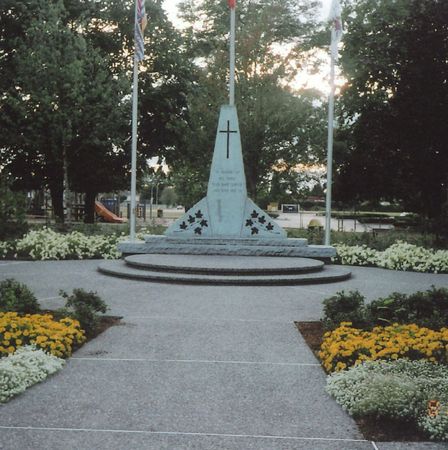
 604 465 4322
604 465 4322General Store Site 12294 Harris Road Pitt Meadows, B.C.
Click Here for Directions& Visiting Hours

Looking Back: What we know of Pitt Meadows war dead
Looking back article from December 2012
Last month we gathered at the cenotaph in Pitt Meadows to honour those residents who gave their time and, for some, their lives to serve this country in wars of the 20th century.
The Pitt Meadows cenotaph was built in 1990 and underwent a redevelopment in 2009 and a rededication in 2011, with the names of the Pitt Meadows War Dead placed on the monument for visitors to read and ponder who these people were.
In the First World War, more than 20 men from this community of less than 250, at the time, enlisted in the Canadian Over-Seas Expeditionary Force. Only one of these men did not return home: Roland Francis Croasdaille Thomson.
We know he died on Sept. 26, 1916, less than a year after he had signed his Attestation Papers and been deemed fit to serve.
We also know he died in France, but don’t know precisely where or how. He is listed on the Vimy Memorial and his is one of thousands of names of men who fought for Canada in the First World War and who lost their lives, but have no official grave.
According to his paperwork, R.F.C. Thomson was born Nov. 20, 1875 in Belfast, Ireland and was just shy of his 41st birthday at the time of his death. His eyes were hazel, his complexion fair, his hair gray, stood five-foot-eight-and-a-half and had a tattoo. He was single and had listed his next of kin as a sister, Mrs. F. Chute, County Kerry, Ireland.
He enlisted in Vernon and joined the Canadian Infantry, 14th Battalion. He died a private.
Thomson arrived in Canada in October 1911. Prior to that time he had lived with his sister and her husband and children at 29 Glannagilliagh Road, Caragh Lake, Ireland. In the 1911 Irish census he was listed as a “shareholder” and arrived in this country too late to be included in the 1911 Canadian census. We know he was living in Pitt Meadows at the time of our municipality’s incorporation as he is listed as serving on the first council and being at their first meeting in May 1914.
His occupation in this community is unknown. At the time he filled in his Attestation Papers in Vernon he listed his profession as “rancher,” but there was no spot for “resident address” on these early papers (as there was later in the war),so we do not know where he was living at the time.
With a date of death of Sept. 26, 1916, Thomson likely was at the First Battle of the Somme. If so, he took part in one of the bloodiest battles of the war and was one of 396 casualties from the 14th Battalion on that date.
Where his body of Roland lies is lost to history, but his name lives on with a mention on the Vimy Memorial and on a small community cenotaph in Pitt Meadows.
Leslie Norman, Curator Pitt Meadows Museum





